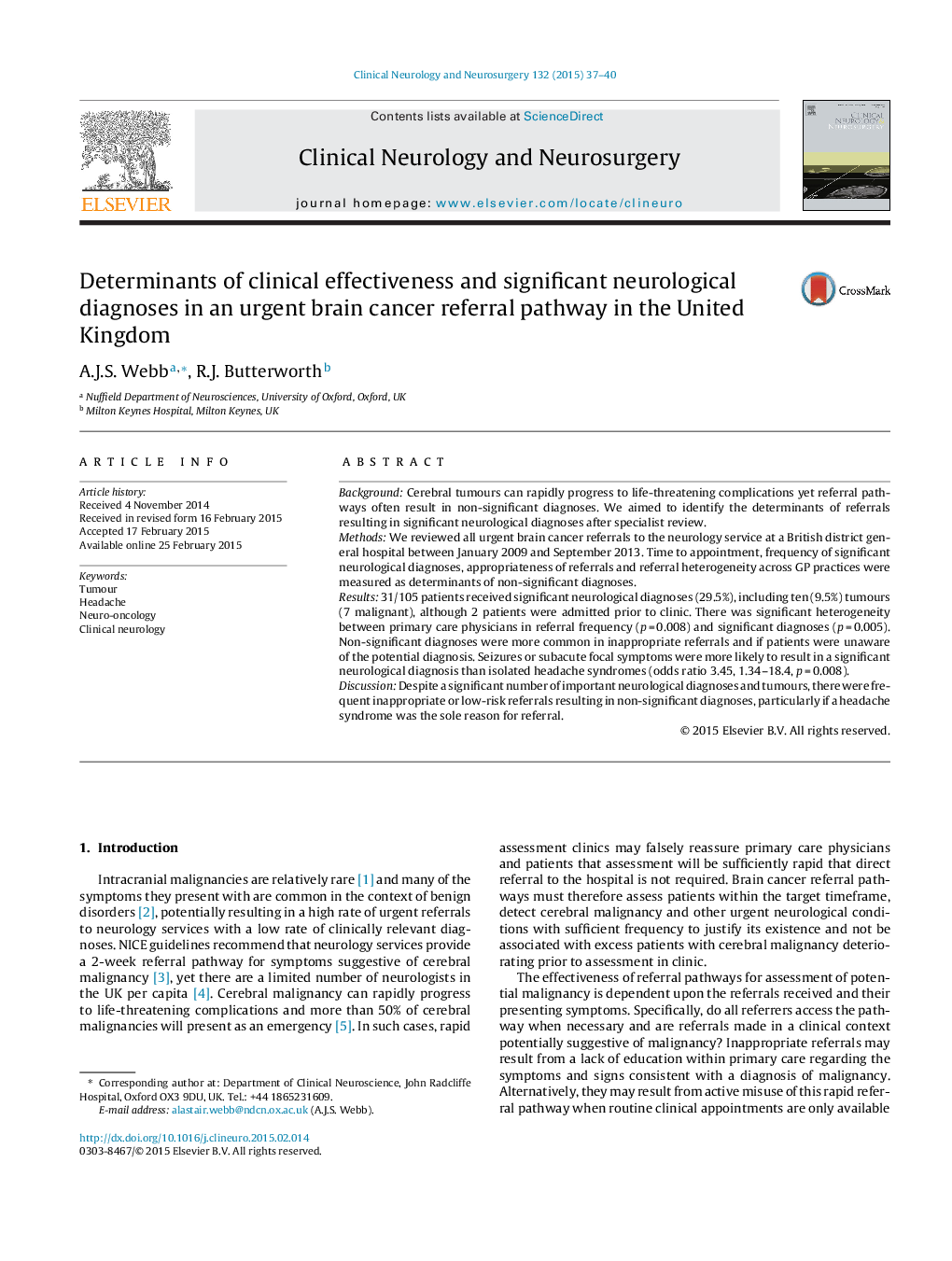| کد مقاله | کد نشریه | سال انتشار | مقاله انگلیسی | نسخه تمام متن |
|---|---|---|---|---|
| 3039925 | 1579690 | 2015 | 4 صفحه PDF | دانلود رایگان |
• Review of referrals and diagnoses from a UK secondary-care cancer referral pathway.
• 31/105 patients received significant diagnoses, including 10 tumours.
• Inter-referrer heterogeneity reflected inappropriate referrals.
• Inappropriate or unclear referrals were associated with non-significant diagnoses.
• Isolated headache syndromes did not result in significant neurological diagnoses.
BackgroundCerebral tumours can rapidly progress to life-threatening complications yet referral pathways often result in non-significant diagnoses. We aimed to identify the determinants of referrals resulting in significant neurological diagnoses after specialist review.MethodsWe reviewed all urgent brain cancer referrals to the neurology service at a British district general hospital between January 2009 and September 2013. Time to appointment, frequency of significant neurological diagnoses, appropriateness of referrals and referral heterogeneity across GP practices were measured as determinants of non-significant diagnoses.Results31/105 patients received significant neurological diagnoses (29.5%), including ten (9.5%) tumours (7 malignant), although 2 patients were admitted prior to clinic. There was significant heterogeneity between primary care physicians in referral frequency (p = 0.008) and significant diagnoses (p = 0.005). Non-significant diagnoses were more common in inappropriate referrals and if patients were unaware of the potential diagnosis. Seizures or subacute focal symptoms were more likely to result in a significant neurological diagnosis than isolated headache syndromes (odds ratio 3.45, 1.34–18.4, p = 0.008).DiscussionDespite a significant number of important neurological diagnoses and tumours, there were frequent inappropriate or low-risk referrals resulting in non-significant diagnoses, particularly if a headache syndrome was the sole reason for referral.
Journal: Clinical Neurology and Neurosurgery - Volume 132, May 2015, Pages 37–40
